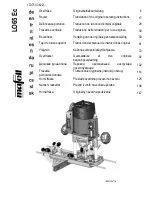
If you add a provisioned switch that is a different type than specified in the provisioned configuration to a
powered-down switch stack and then apply power, the switch stack rejects the (now incorrect)
switch
stack-member-number provision type
global configuration command in the startup configuration file. However,
during stack initialization, the nondefault interface configuration information in the startup configuration file
for the provisioned interfaces (potentially of the wrong type) is executed. Depending on the differences between
the actual Switch type and the previously provisioned switch type, some commands are rejected, and some
commands are accepted.
If the switch stack does not contain a provisioned configuration for a new Switch, the Switch joins the
stack with the default interface configuration. The switch stack then adds to its running configuration with
a
switch stack-member-number provision type
global configuration command that matches the new
Switch. For configuration information, see the
Provisioning a New Member for a Switch Stack
section.
Note
Effects of Replacing a Provisioned Switch in a Switch Stack
When a provisioned switch in a switch stack fails, it is removed from the stack, and is replaced with another
Switch, the stack applies either the provisioned configuration or the default configuration to it. The events
that occur when the switch stack compares the provisioned configuration with the provisioned switch are the
same as those when you add a provisioned switch to a stack.
Effects of Removing a Provisioned Switch from a Switch Stack
If you remove a provisioned switch from the switch stack, the configuration associated with the removed
stack member remains in the running configuration as provisioned information. To completely remove the
configuration, use the
no switch stack-member-number provision
global configuration command.
Stack Protocol Version
Each software image includes a
stack protocol version
. The stack protocol version has a
major
version number
and a
minor
version number (for example 1.4, where 1 is the major version number and 4 is the minor version
number). Both version numbers determine the level of compatibility among the stack members. You can
display the stack protocol version by using the
show platform stack manager all
privileged EXEC command.
The switches with the same Cisco IOS software version have the same stack protocol version. Such switches
are fully compatible, and all features function properly across the switch stack. A switch with the same Cisco
IOS software version as the active switchstack master can immediately join the switch stack.
If an incompatibility exists, the fully functional stack members generate a system message that describes the
cause of the incompatibility on the specific stack members. The active switchstack master sends the message
to all stack members.
For more information, see the
Major Version Number Incompatibility Among Switches
procedure and the
Minor Version Number Incompatibility Among Switches
procedure.
Major Stack Protocol Version Number Incompatibility Among Stack-Capable Switches
Switch with different major Cisco IOS software versions usually have different stack protocol versions. Switch
with different major version numbers are incompatible and cannot exist in the same switch stack.
Consolidated Platform Configuration Guide, Cisco IOS Release 15.2(4)E (Catalyst 2960-X Switches)
728
Information About Switch Stacks
Summary of Contents for Catalyst 2960 Series
Page 96: ......
Page 196: ......
Page 250: ......
Page 292: ......
Page 488: ......
Page 589: ...P A R T VI Cisco Flexible NetFlow Configuring NetFlow Lite page 509 ...
Page 590: ......
Page 619: ...P A R T VII QoS Configuring QoS page 539 Configuring Auto QoS page 645 ...
Page 620: ......
Page 750: ......
Page 1604: ......
Page 1740: ......
Page 2105: ...P A R T XII Configuring Cisco IOS IP SLAs Configuring Cisco IP SLAs page 2025 ...
Page 2106: ......
Page 2118: ......
Page 2164: ......
















































